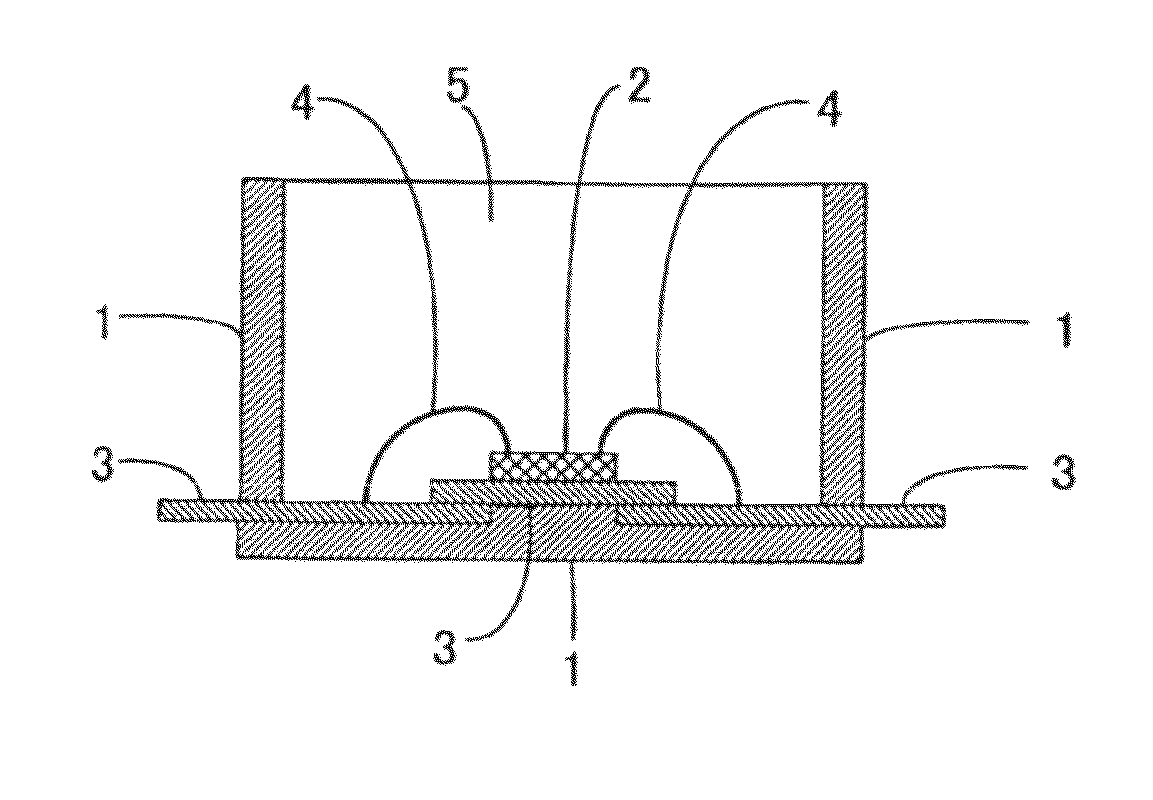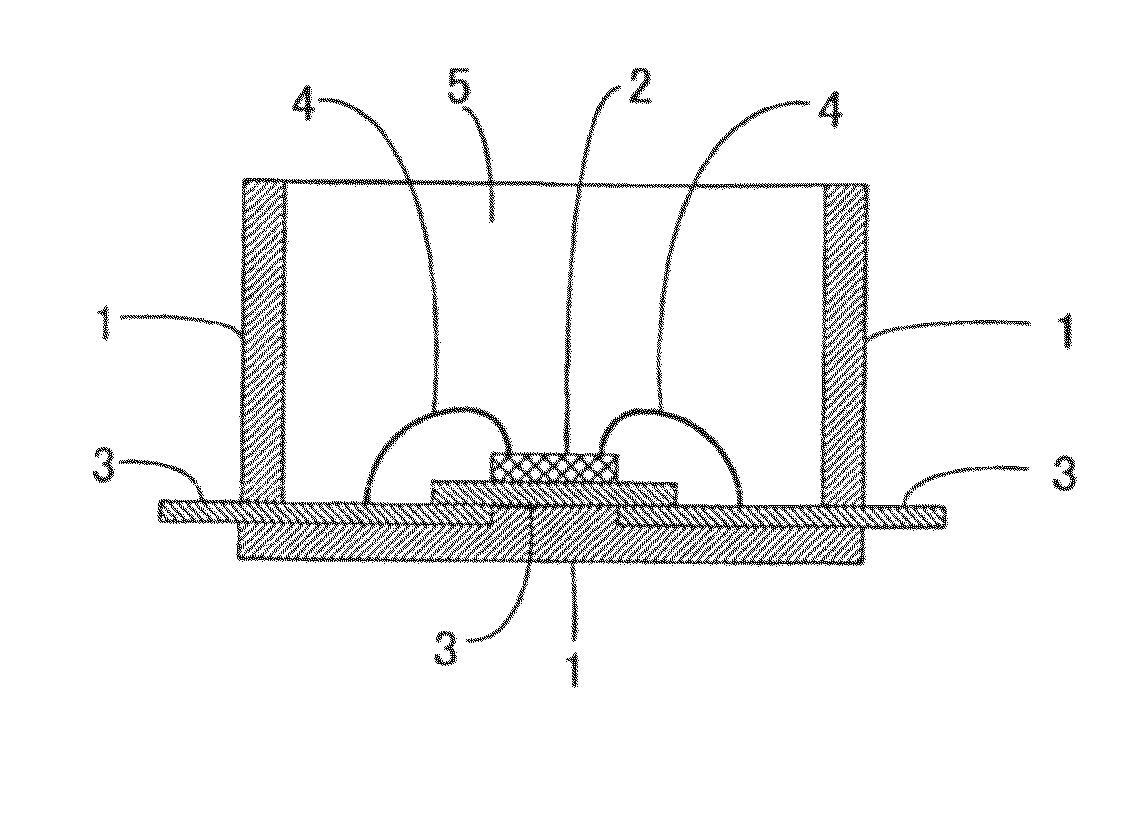Light emitting device encapsulated with silicones and curable silicone compositions for preparing the silicones
a technology of curable silicone and light-emitting devices, which is applied in the direction of solid-state devices, semiconductor devices, thermoelectric devices, etc., can solve the problems of thermal and light resistance modification of silicone products, drop of light output, and poor mechanical and adhesion properties of optically clear silicone products compared to epoxy resins and filled silicones
- Summary
- Abstract
- Description
- Claims
- Application Information
AI Technical Summary
Benefits of technology
Problems solved by technology
Method used
Image
Examples
reference example 1
Preparation of HMe2SiO(Ph2SiO)2SiMe2H
[0187]In a 4-necked 1 L flask fitted with a thermometer, mechanical stirrer, nitrogen gas inlet tube, and condenser, 735.6 grams (g) diphenyldimethoxysilane, 45.2 g acetic acid, and 670 milligrams (mg) trifluoromethanesulfonic acid were placed under nitrogen. Then the reaction mixture was warmed up to 55° C. over 40 minutes (min). After heating for 80 min, the reaction was quenched with addition of 4.5 g calcium carbonate. The reaction mixture was evaporated to give 60 g of clear oil. It was purified by a recrystallization from n-hexane to yield a pure MeO(Ph2SiO)2Me.
[0188]In a 4-necked 0.5-L flask fitted with a thermometer, a mechanical stirrer, pressure equalized dropping funnel, and condenser, 128 g MeO(Ph2SiO)2Me, 73.8 g 1,1,3,3-hexamethyldisiloxane, and 34.7 g acetic acid were placed under nitrogen. To dissolve the alkoxysilane, 100 ml toluene was added to the flask, and then, 267 mg trifluoromethanesulfonic acid was added to the reaction mi...
reference example 2
Preparation of HMe2SiO(Ph2SiO)2.5SiMe2H
[0189]In a 4-necked 2-L flask equipped with a thermometer, mechanical stirrer, pressure equalized dropping funnel, and condenser, 977.6 g diphenyldimethoxysilane, 1.497 g trifluoromethanesulfonic acid, and 144 g acetic acid were placed in this order under nitrogen. After the reaction mixture was warmed to 42° C., the reaction temperature gradually raised to 64° C. during 15 min without any heating. After the reaction temperature was decreased to 62° C. (20 minutes later), the reaction mixture was refluxed for 15 min. The mixture was evaporated to yield a crude intermediate MeO(Ph2SiO)2.5OMe as a mixture still containing trifluoromethanesulfonic acid.
[0190]To the above residue, 258 g 1,1,3,3-tetramethyldisiloxane was added. After the mixture was warmed at 50° C., 192 g acetic acid was added slowly to the mixture maintaining the pot temperature at 49-51° C. After the addition, the reaction temperature was maintained at 50° C. for 5 min. To the re...
reference example 3
Characterization of Composition and Cured Composition
[0191]A composition was characterized by its viscosity at 25° C. and refractive index of 587 nm light at 25° C. The cured silicone product prepared by heating the composition at 150° C. for 1 min an oven was characterized by its transmittance at 400 nm with 10 mm light path length and durometer A or D hardness.
PUM
| Property | Measurement | Unit |
|---|---|---|
| mol % | aaaaa | aaaaa |
| mol % | aaaaa | aaaaa |
| particle size | aaaaa | aaaaa |
Abstract
Description
Claims
Application Information
 Login to View More
Login to View More - R&D
- Intellectual Property
- Life Sciences
- Materials
- Tech Scout
- Unparalleled Data Quality
- Higher Quality Content
- 60% Fewer Hallucinations
Browse by: Latest US Patents, China's latest patents, Technical Efficacy Thesaurus, Application Domain, Technology Topic, Popular Technical Reports.
© 2025 PatSnap. All rights reserved.Legal|Privacy policy|Modern Slavery Act Transparency Statement|Sitemap|About US| Contact US: help@patsnap.com



